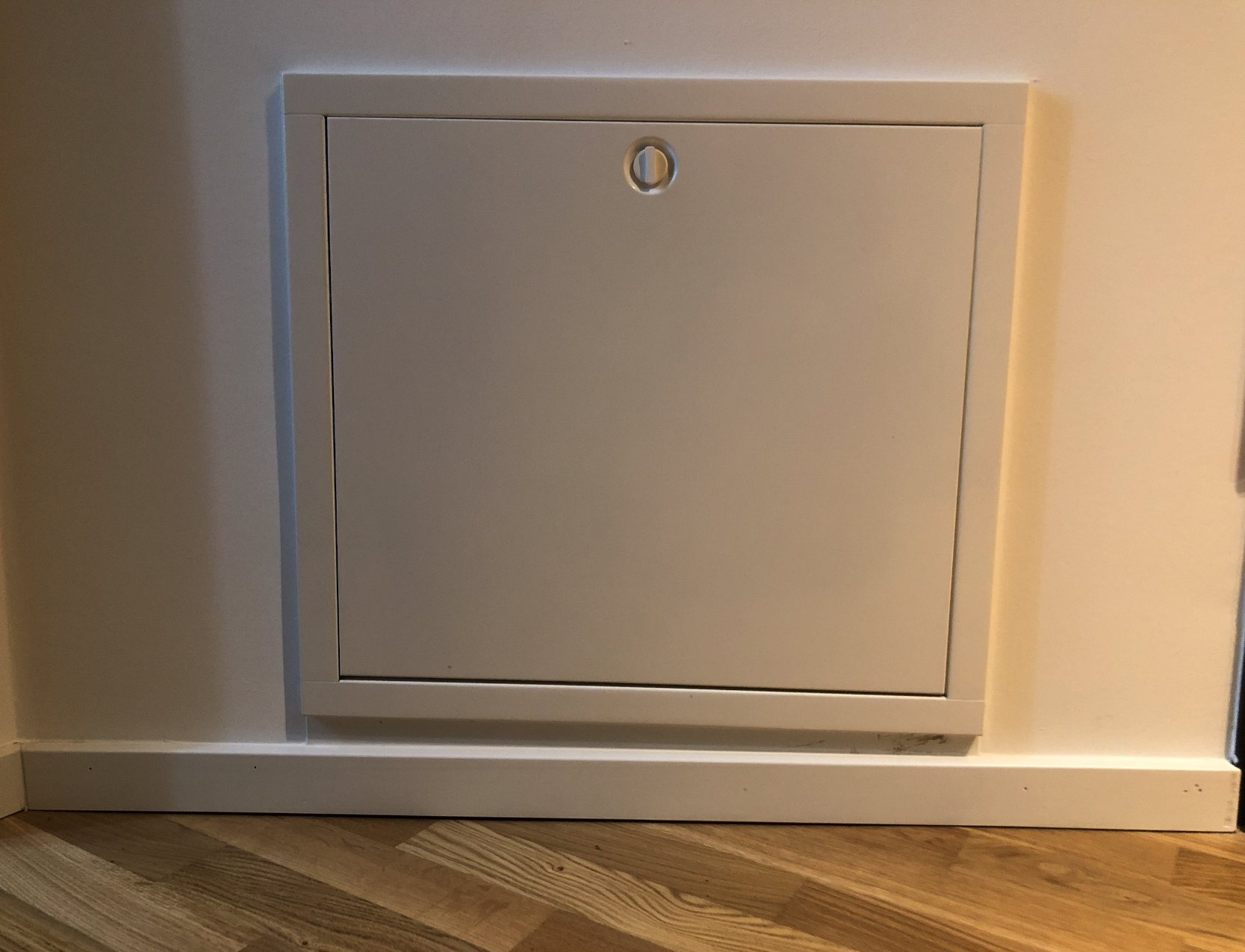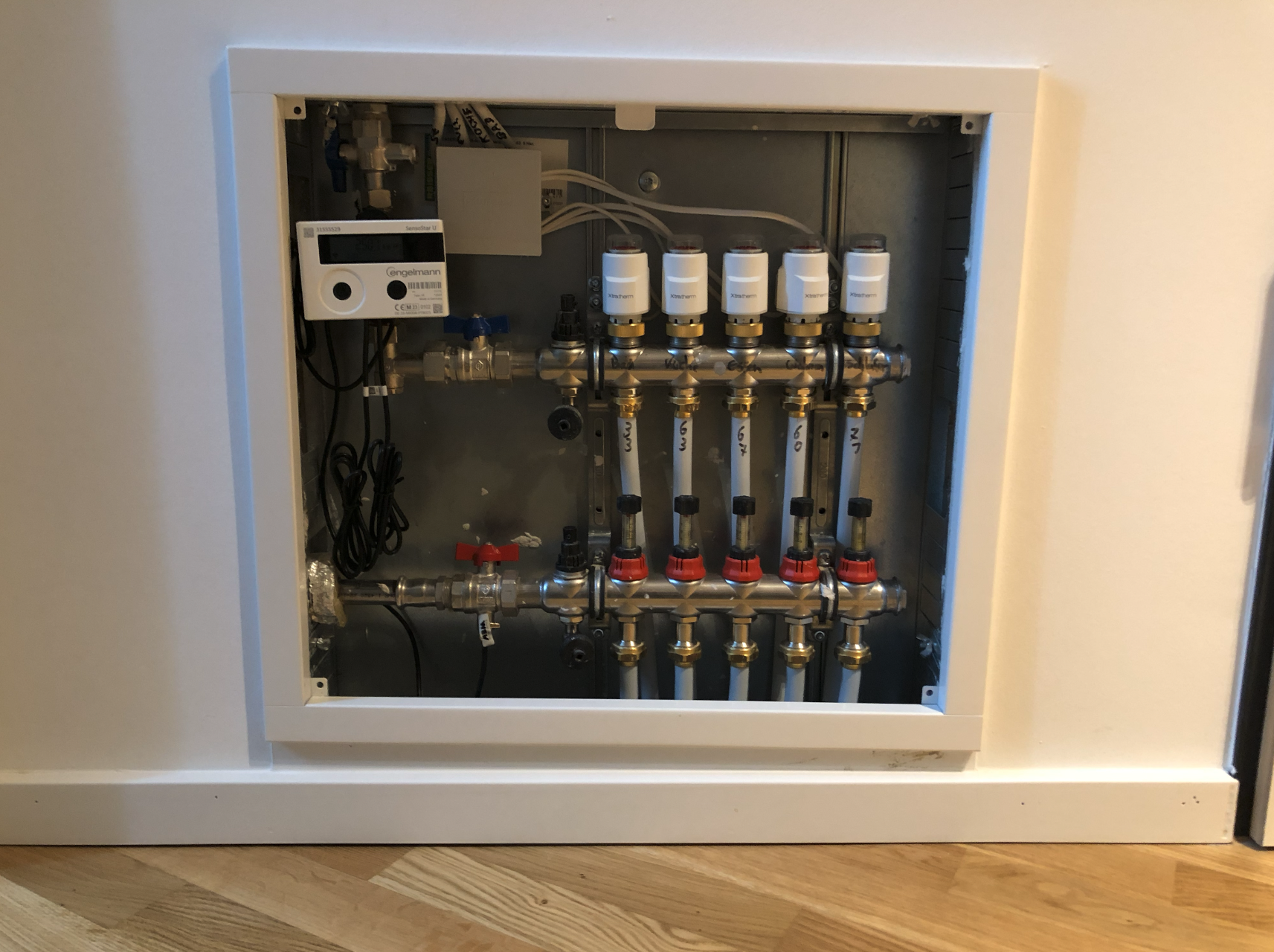Virtual Assistant
Installer
Getting Started Guide
Solutions and structure of the documentation
Hardware Order and Commissioning
Terms and Conditions of Sale and Warranty
PP - Installer Guide - from Planning to Commissioning
PP - Presentation of Climkit Solutions
PP - Information to be Collected On-Site
PP - Request for Proposal Procedure
PP - Offer Content
Wiring Diagrams
Gateway and Communication
Community - Electric Metering - RCP
Heating - Heating and Water Metering
Mobility - EV Charging Stations
Washaccess - Laundry Manager
eBike - Charging Electric Bicycles
Optimization of self-consumption
Energy Monitoring of the Building
Equipment and Installation
Configuration and Commissioning
Commissioning
Commissioning Startup Guide
Add a router to a site
Add a Climkit Gateway to a Site
Configuration of Electric Meters
Charging Station Configuration
Configuration of heating and water meters (MBus)
Installation of Shelly Meter-Relays
Optimization via Relay and EV Charging Stations
Verification of Meter Connections
Advanced Configuration
Gateway Configuration
RFID Reader and Meter-Relay Configuration
IP Network Configuration and Routers
RS485 to Ethernet TCP/IP Converters
Configuring Teltonika RUT241
Display Screen Configuration
Configuration of Modbus Meters
Counting Data Processing
Manually Read Meter
Inepro PRO380 Meters and Various
ABB Terra AC Charger Configuration
Wallbox Station Configuration
Firewall Rules for Climkit Gateway
Schneider EVlink Pro AC Charger Configuration
Zaptec Charger Configuration
Owner
Administrative setup
Getting Started Guide - Administrative Setup
Form - 1. Contact Information
Form - 2. Solutions
Form - 3. Rates
Contract and documents to be completed
Online Account for Owners
Information Flyers for Consumers
Online access, RFID badge, and charging stations
FAQ and Other Information
Resident
Account and app
Electricity Bill
Car charging station
Building Laundry Room
Electric Bike (eBike) Charging
Platform
Access to the Platform
Terminology
Site
Parameters
Creation/Editing of a Note or an Issue to Address
Close an issue to address
The statuses of a site
Add/Modify the Building(s)
The steps to set up a site
Delete/disable a site
Add/Edit Equipment
Edit Basic Site Information
Equipment
Add/Modify a Gateway
Add/Modify a Router
Add/Modify an electricity meter
Insert Meters in Bulk
Assigning Meters in Bulk to a Gateway
Add/Modify a Distribution Area
Add/Modify a Charging Station
Add/modify a thermal or water meter
Add/Edit a DSO Meter (FTP Transfer)
Connecting remotely to a Climkit gateway
Administration
Stakeholders
Management Conditions
Visualizing Site Management Conditions
Activation/Deactivation of a Solution
Configuration of the Operating Method
Visualizing financial conditions
Creation/Editing/Adding a Financial Condition
Removal of a financial condition
Accounts
Create a consumer account
Create a contact
View and download invoices from an account
Send access to the platform to a contact
Add/modify the billing address
Link an existing account to a site
Changing the correspondence method
Rates and billing points
Creation/Editing of a Billing Point
Registering a move (transfer)
Assignment of an account to a billing point
Add/Modify the Default Charge Advance Payment for a Billing Point
See the prices on the consumption site
Editing a consumption rate
Creation/Editing of a Consumption Rate
Creation/Editing of a Consumption Rate Component
See fixed rates and subscriptions
Customizing Invoice Position Labels/Headings
See the Financial conditions billed at the billing points
RFID Badges
Accounting
Tools
Meter Control
Visualization
Fee Statements
Introduction to the Expense Count Tool
Create/Modify an Expense Accounting Period
Edit Fee Breakdown Settings
Add/modify an overhead invoice from an expense statement
Edit the advance payments received from an expense statement
Specificity of heating and hot water production costs
Check and download meter readings for the billing period.
Distributing and Generating Fee Statements
Export individual consumption for the billing period
API
Table of Contents
- Categories
- Installer
- Wiring Diagrams
- Heating - Heating and Water Metering
Heating - Heating and Water Metering
1. Connection Diagram
Individual counting of heating and hot water allows for the fairest distribution of heating costs among the occupants of a building.
According to the requirements of the Individual Accounting of Energy and Water Costs of the Swiss Confederation (DIFEE) in effect since 2017, the following must be installed:
- A thermal energy meter (heating) for each apartment
- A hot water meter for each apartment
- A thermal energy meter at the boiler outlet to measure total consumption and deduce the share for communal areas
- A thermal energy meter at the entrance of the water heater to measure the energy needed for hot water production
If one wishes to fairly distribute the costs of consumption and water purification, a cold water meter is installed for each apartment as well as for communal areas (laundry, irrigation, etc.).
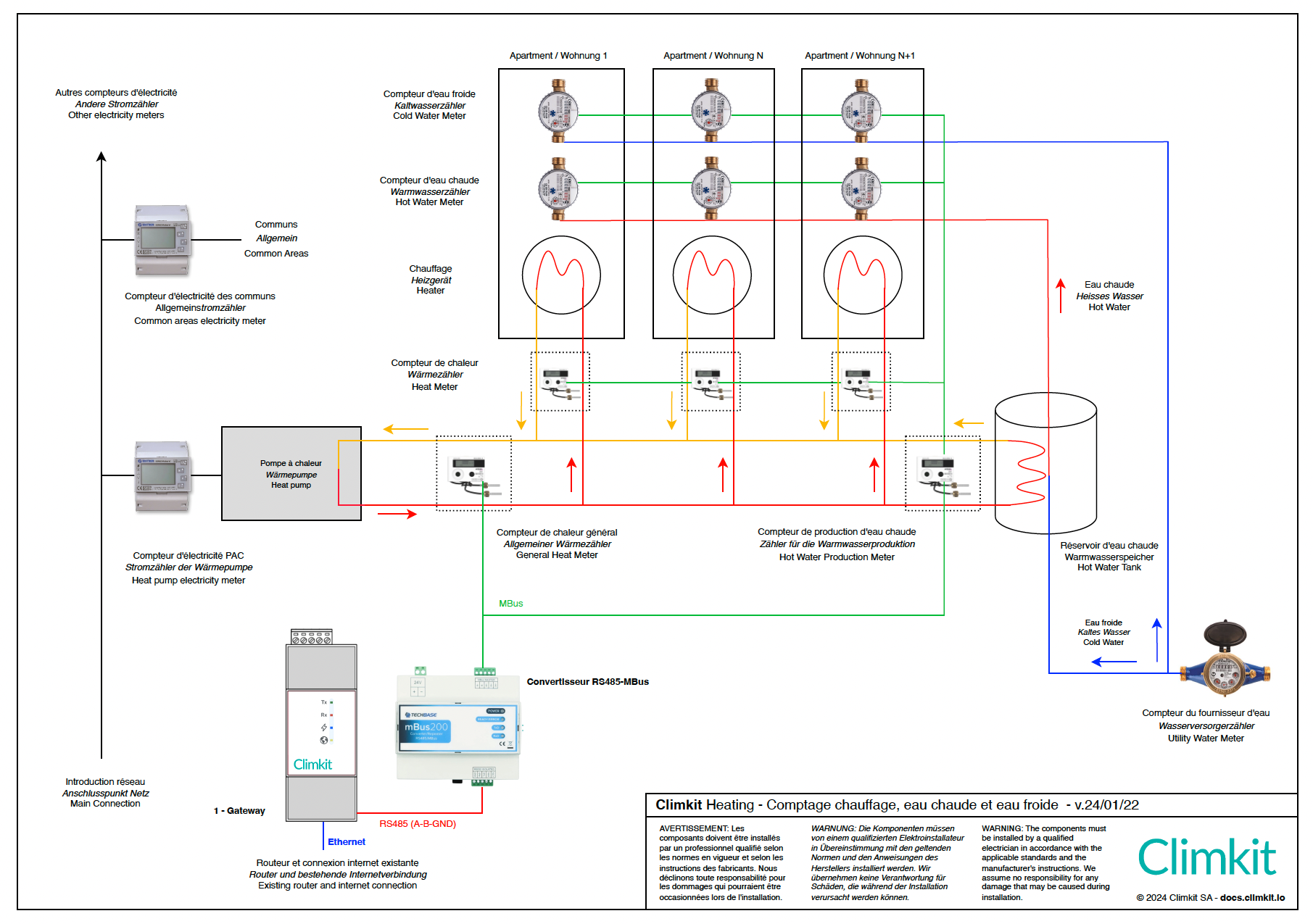
2. Meter Connections
Connection of Thermal Meters
The diagrams below also apply to other types of boilers other than a heat pump (wood, gas, etc.).
Scenario A: A general meter at the boiler outlet, a meter for hot water production, and a meter for each apartment.
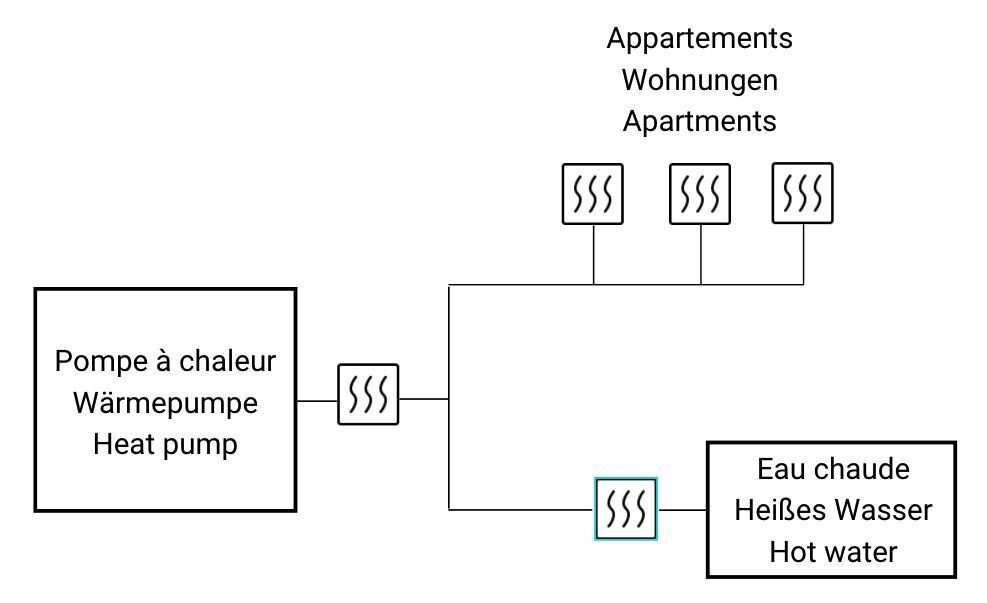
This is the correct diagram as recommended by the official guidelines.
Consequence for distribution:
- Heating costs are distributed among each occupant according to the consumption measured by the individual apartment meters.
- Costs for hot water production are distributed based on individual hot water consumption, measured via individual hot water meters.
- Heating costs for communal areas are distributed based on the surface areas of the apartments.
Scenario B: A meter only for each apartment.
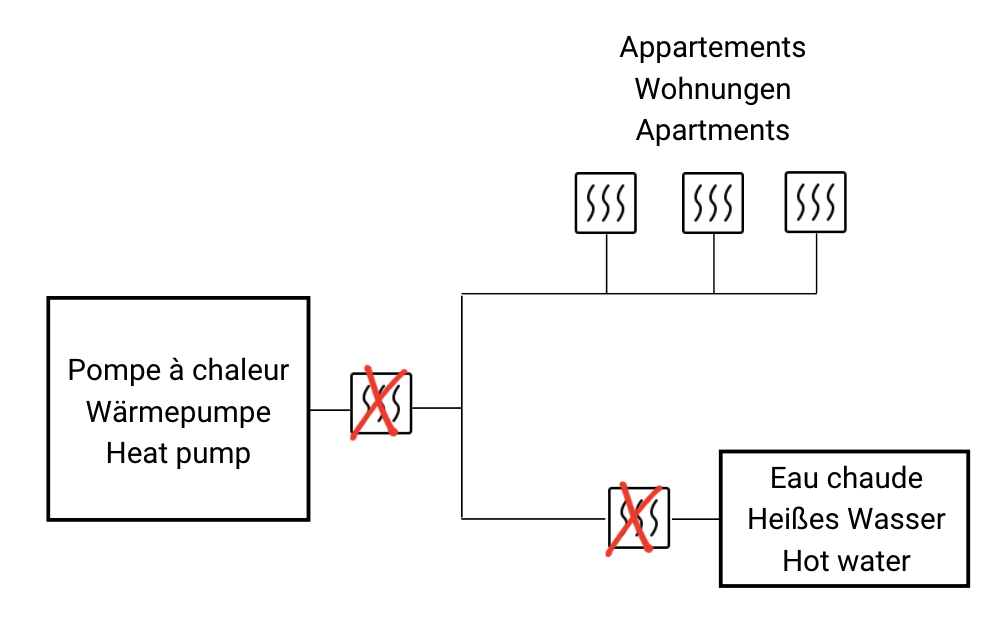
Not everything is measured.
Consequence for distribution:
- Heating costs for communal areas are estimated.
- Costs for hot water production are estimated.
If the general meter at the boiler outlet is omitted, it is strongly recommended to install at least one meter for hot water production.
Nevertheless, without this meter, the usual estimation is 25% of the total costs dedicated to the production of sanitary hot water.
Scenario C: No meter.
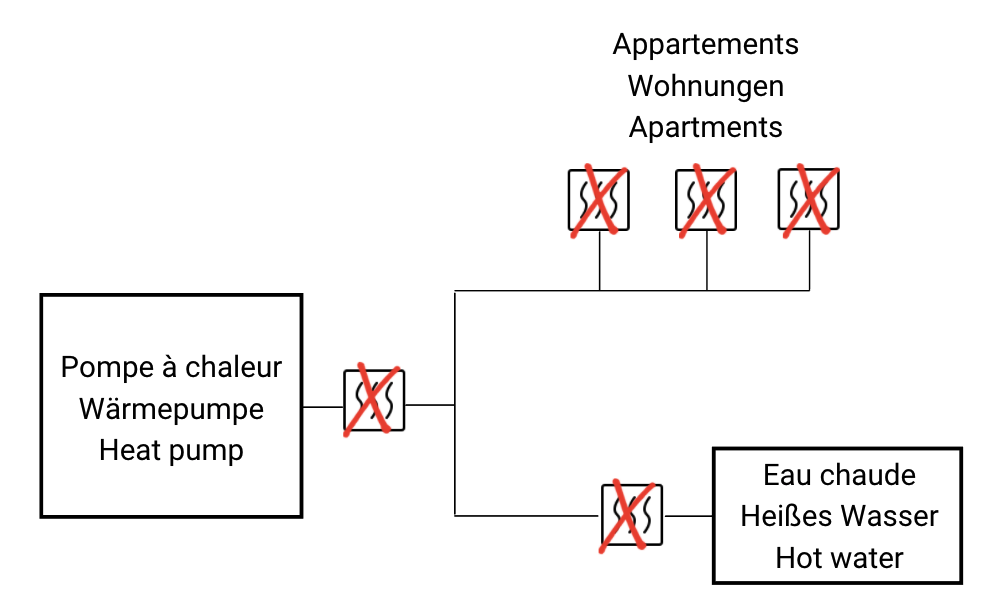
No thermal consumption is measured.
Consequence for distribution: heating costs are allocated based on the surface areas of the apartments.
Connection of Electrical Meters
If the heating system is a heat pump (PAC), it is powered by electricity.
Scenario A: One meter for the PAC and one meter for communal areas.
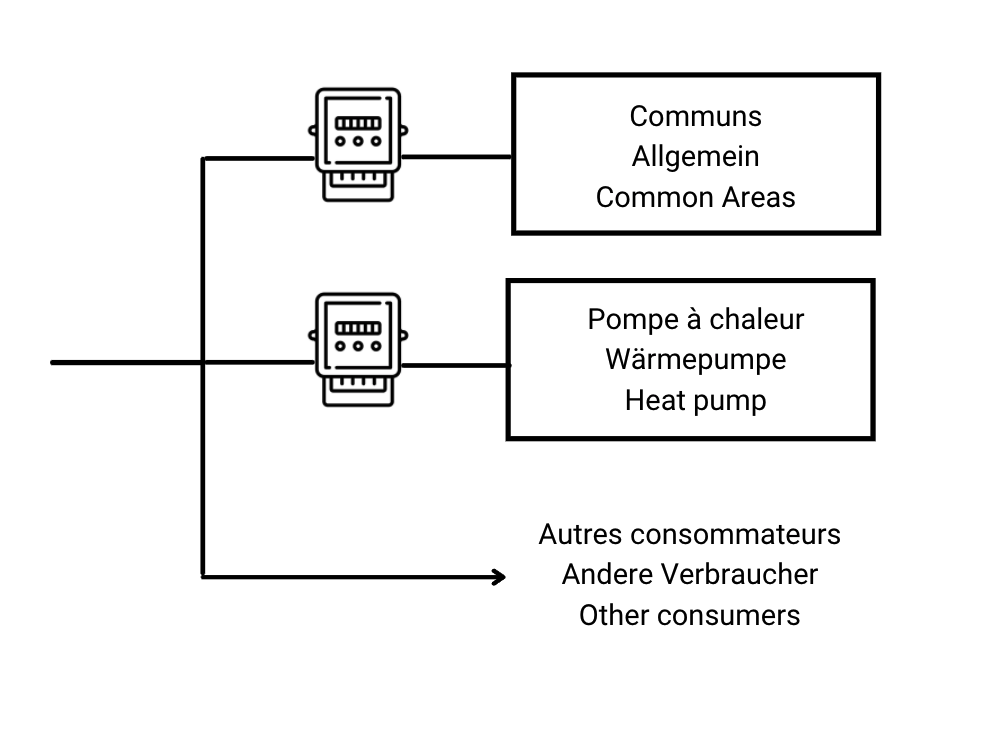
Consequence on distribution: the electric consumption of the PAC is separate from the communal areas. No estimation is necessary.
Scenario B: A single meter for the PAC and communal areas.
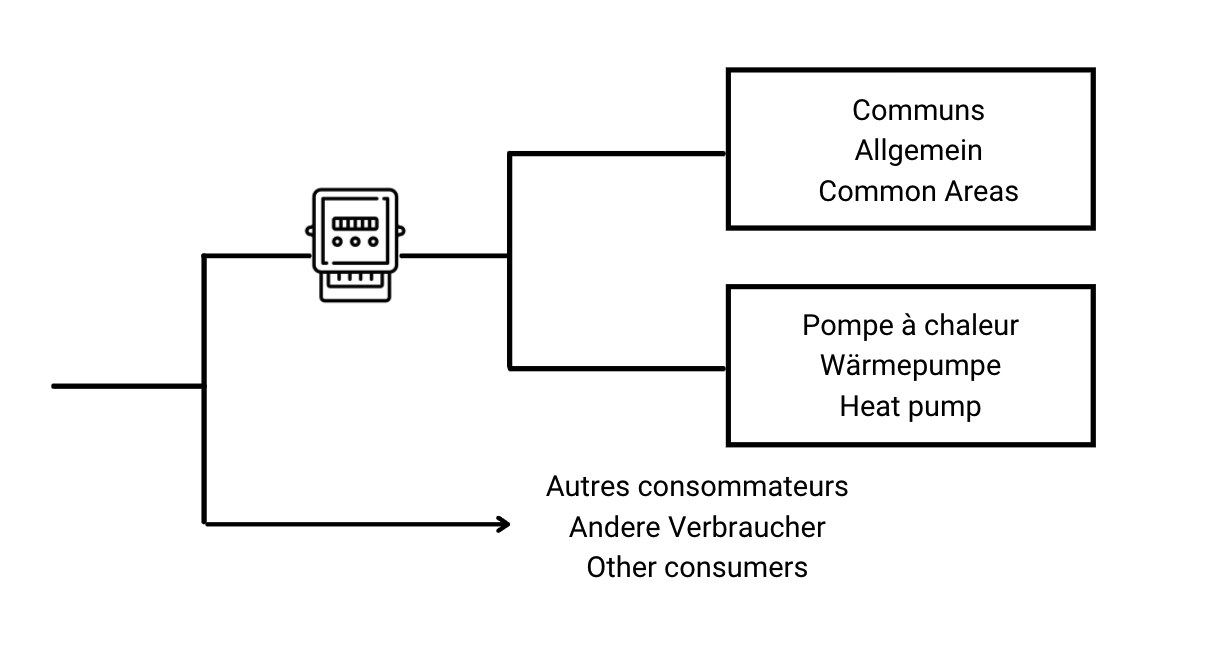
Consequence for distribution: the electrical consumption of the communal areas must be estimated.
3. Installation Example
It is strongly recommended to position the heating manifold as well as the heating meter in an access hatch located at the entrance of the apartment, rather than at the back of a piece of furniture. This configuration greatly eases access to the meter for maintenance.
